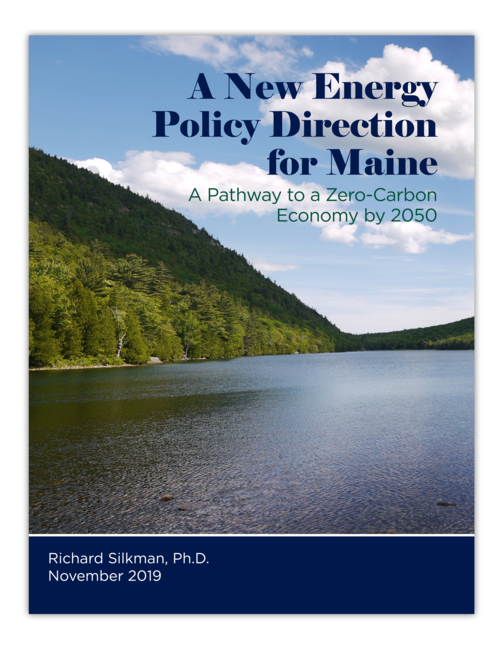Over the past fifty years, energy policy in Maine has been driven alternatively by competitive pressures to keep energy prices low and environmental imperatives to reduce CO2 and other greenhouse gas (“GHG”) emissions. The net result of these efforts is that today energy prices in Maine are higher than the national average, while emissions are somewhat lower. Maine has paid a high price to achieve marginal reductions in GHG emissions.
In this report, I look to the next thirty years and specifically whether there is a feasible pathway for Maine to achieve a zero-carbon economy at a reasonable cost. I conclude that there is. This pathway is based on two pillars – the conversion of transportation, heating and processes to electricity (so-called “beneficial electrification”) and the decarbonizing of the electricity sector through the development of renewable generation and battery storage (so-called “deep decarbonization”). Assuming reasonable rates of conversion of all sectors to electricity over the next thirty years and continuing declines in the real prices of solar photovoltaic systems and on-shore and off-shore wind generation and, importantly, declines in the costs of battery storage capacity, I show how Maine can accomplish a thirty-year transition to a zero-carbon economy without increasing the total amount it spends on energy each year, relative to the average it has spent each year over the past twenty years.
A key factor in this thirty-year transition is a shift in the energy sector from fuel and operating costs to capital investments. Essentially, deep decarbonization represents a substitution of capital for operating costs across the entire energy sector, thereby placing a premium on the ability to raise enormous amounts of capital as efficiently as possible. I estimate that this transition will require investments of close to $60 billion in new generation and storage technologies and in building out the electric grid to accommodate a nearly five-fold increase in peak demands that will result from beneficial electrification. I propose a new state structure – the Maine Energy Generation Authority – to accomplish this.
A second key factor is the development of off-shore wind. I show that off-shore wind generation tends to be countercyclical to solar PV generation in Maine and to offer a better match to electric loads after beneficial electrification. This allows Maine to reduce the amount of more expensive battery storage capacity to balance the mismatch between hourly, daily and seasonal electric generation and electric loads.
The transition that Maine and the world needs to accomplish over the next thirty years if we are to have any chance of mitigating the most adverse consequences of climate change and global warming is most daunting. I have laid out a pathway and a variety of policy prescriptions that address risks in a reasonable fashion by accelerating those actions and technologies that present lower degrees of uncertainty, while deferring those where the uncertainty is greatest. I focus initially on market mechanisms and voluntary activities. These, however, will not be sufficient to move us along the pathway. Accordingly, I identify mandates and requirements that are designed to make sure we track the complete pathway over the next thirty years.
I believe that this is the first attempt to set out such a pathway. As I note, it is only one such route to a zero-carbon economy in 2050. I trust that others will review my work, will identify its strengths and weaknesses and will offer improvements to it.
1-30-20 BANGOR DAILY NEWS - HOW MAINE COULD EMIT ZERO CARBON BY 2050 WITHOUT MORE ENERGY SPENDING
Sign up with your email address to receive news and updates about energy markets.
